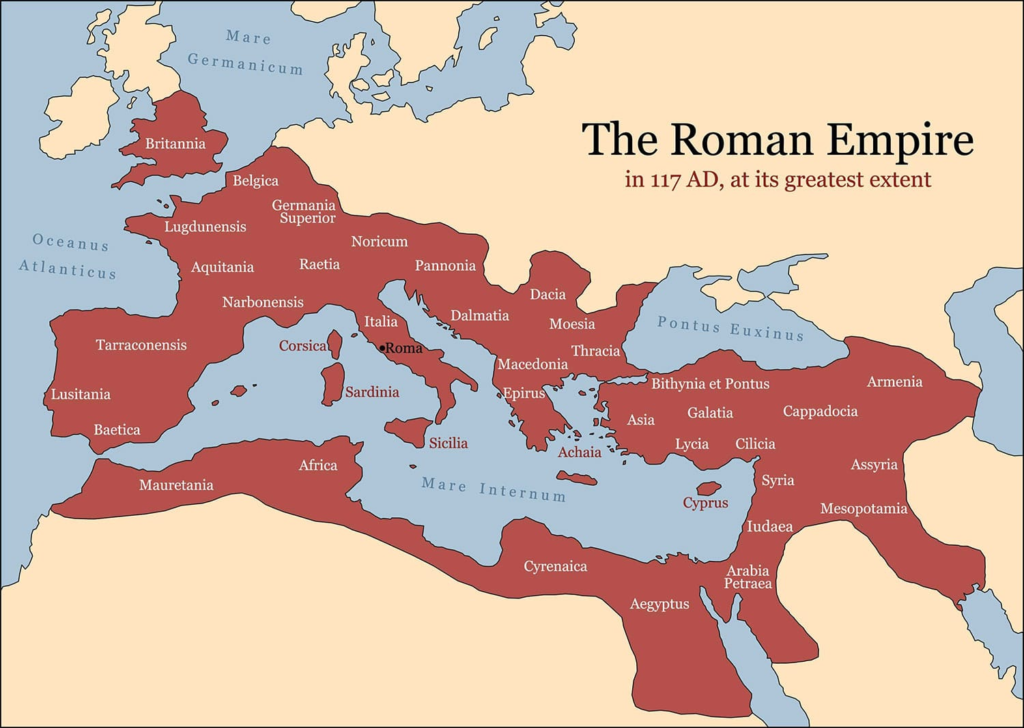From its mythical origins to its meteoric rise as a global superpower, the Roman Empire’s echoes continue to reverberate across the ages. Stemming from the Latin city of Alba Longa, the legendary tale of Romulus and Remus, the twin sons of the war god Mars, laid the foundation for this remarkable civilization. Romulus, the purported founder, declared Rome an “asylum city,” attracting a diverse populace from across the Italian peninsula. However, the need for wives led to the infamous “rape of the Sabine women,” an act that would eventually pave the way for co-ruling with the Sabine king.
The Republican Era: Struggles, Conquests, and Turmoil
As the Roman Republic emerged, power was initially concentrated among the patrician aristocracy, leaving the plebeian majority disenfranchised. Nevertheless, through a series of protests and reforms, the equestrian class gradually gained equal rights. This period witnessed an almost constant state of war, as Rome steadily expanded its dominion across the Mediterranean, culminating in the Punic Wars against Carthage.
Corruption and greed ultimately led to civil wars, with figures like Marius, Sulla, and the legendary Julius Caesar emerging as central players. Caesar’s crossing of the Rubicon River in 49 BCE set the stage for a pivotal conflict against the Senate and his former ally, Pompey. Despite his eventual assassination on the Ides of March, Caesar’s legacy paved the way for the transition from Republic to Empire.

The Dawn of the Roman Empire: Pax Romana and Imperial Grandeur
Octavian, later known as Augustus, ushered in the Roman Empire in 27 BCE, establishing himself as the sole ruler while maintaining the illusion of the Republic. His 41-year reign, known as the Pax Romana, was a golden age of peace, prosperity, and cultural flourishing. Subsequent emperors like Tiberius, Caligula, and Claudius each left their indelible mark on the empire’s trajectory.
The Flavian dynasty, under Vespasian and his sons Titus and Domitian, saw the construction of iconic monuments like the Colosseum, financed by the spoils of the Jewish resistance’s conquest. The Nerva-Antonine dynasty, with rulers like Trajan, Hadrian, and Marcus Aurelius, ushered in an era of relative stability and territorial expansion.
The Imperial Crisis and the Rise of Constantine the Great
The late Roman Empire witnessed a turbulent period known as the Imperial Crisis, with twenty-nine emperors rising and falling through plots and violent deaths. Diocletian’s tetrarchy system brought a semblance of order, but it was Constantine the Great who emerged victorious, legalizing Christianity and establishing a new capital in Byzantium, later known as Constantinople.
Read More:- Jessica Alba Reveals Secrets to Long-Lasting Marriage and New Movie!
The Fall of an Empire: The Division and Eventual Collapse
The Roman Empire was ultimately divided into eastern and western halves, with the Western Roman Empire falling to barbarian interlopers in 476 AD. The Eastern Empire, later known as the Byzantine Empire, endured for nearly a millennium before succumbing to the Ottoman Turks in 1453, marking the end of an era that had profoundly shaped the course of human civilization.
Know about Anime! Visit Pop Media Pulse
